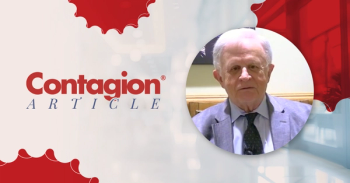
US Investment in Global Health Security—A Good Return
In the dollars and cents of health security, funding towards the Global Health Security Agenda is a smart investment.
Last summer, I wrote about
Beth Cameron, PhD, vice president of Global Biological Policy and Programs at the Nuclear Threat Initiative noted in a recent article that, “without sufficient funding of $208.2 million a year for the Centers for Disease Control and Prevention (CDC) and $172.5 million a year at the United States Agency for International Development (USAID), we [will] weaken the global network of protection, increase risk to American lives, and threaten investments from other governments and the private sector.”
Like many components of public health and infectious disease, the importance of prevention is often forgotten until an outbreak occurs. Hospital preparedness and infection prevention were not necessarily “big ticket” items in the United States until we had Ebola in Dallas, Texas, but it only takes 1 laboratory incident to remind us of the importance of biosecurity and biosafety.
Currently, there are 60 countries that participate in the GHSA, and the United States either leads or significantly contributes to several of its action packages. It can be hard to truly understand the scope of the GHSA and what US participation really means, though. You could argue the answer is readily apparent: “An outbreak anywhere means an outbreak everywhere,” and “disease knows no borders,” but, what’s going on behind the scenes?
Recently, USAID released their
Some of the examples of programs that have benefited from US GHSA assistance are apparent across all Action Packages (Prevent, Detect, and Respond). Within the Antimicrobial Resistance Action Package (Prevent), for example, they note that in India, hospital staff have been able to strengthen their ability to detect and prevent the spread of multidrug-resistant organisms and infections through outbreak investigations, isolation and transmission-based precautions, and laboratory-based efforts. Furthermore, in biosecurity efforts, senior lab technicians in Liberia have been trained on biosecurity and biosafety measures, as well as internal auditing.
Within the Detect Action Packages, US GHSA assistance has helped strengthen national laboratory systems and real-time surveillance in areas such as Vietnam, where they launched a pilot of an event-based surveillance program with community engagement that resulted in the reporting of over 100 local outbreaks within the first 6 months.
In addition, in the Workforce Development Action Package (Detect), 79 universities in Africa and Asia have facilitated One Health training for more than 11,500 professionals.
Lastly, Emergency Operations Centers were created within the Respond Action Packages, which facilitated Cameroon’s development of stronger emergency management capabilities. The US also supported the Medical Countermeasures and Personnel Deployment Action Package (Respond) through the provision of 2000 personal protective equipment (PPE) kits to the Democratic Republic of Congo, 300 PPE kits to Uganda, and 100 PPE kits to Guinea, in response to outbreaks that ranged from Ebola to avian influenza and anthrax.
These are but a handful of the contributions that the GHSA has made across the world with US investments. It is a remarkable thing when investment is made in global health security efforts, but without the United States leading and encouraging such efforts, the future of global health security and American biodefense is at stake.
Newsletter
Stay ahead of emerging infectious disease threats with expert insights and breaking research. Subscribe now to get updates delivered straight to your inbox.






























































































































































































































































































































